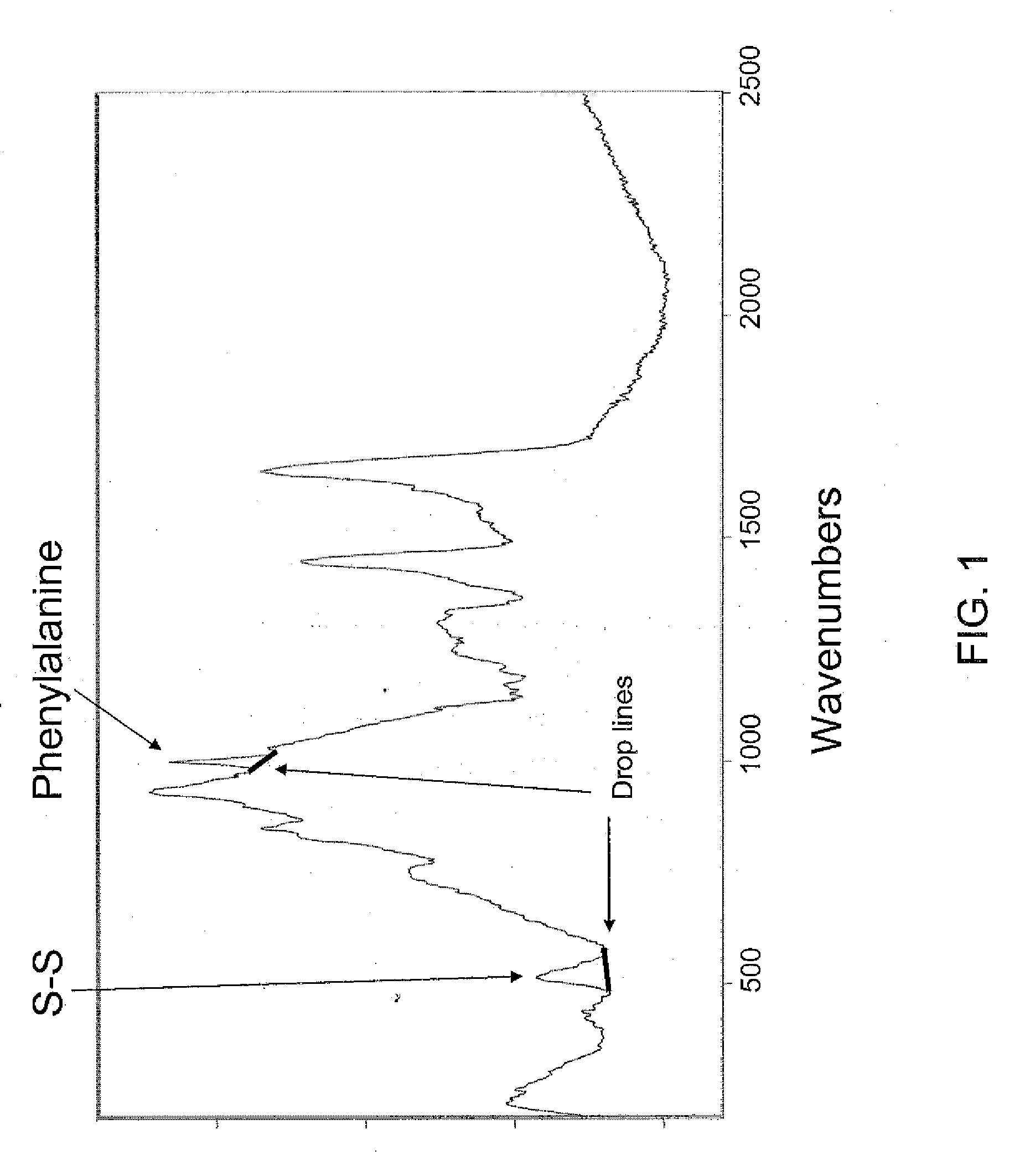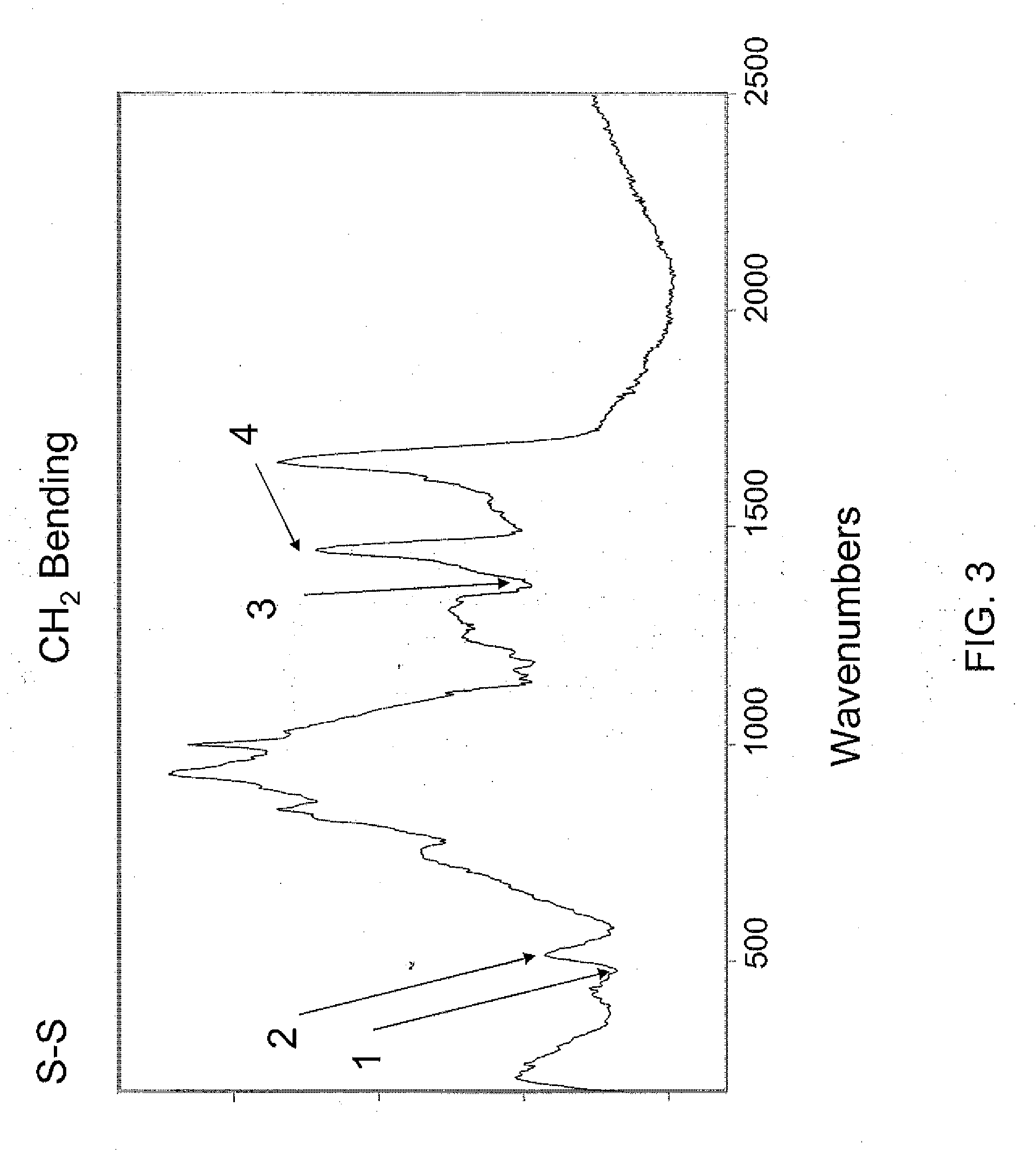Method for determination of bone fracture risk using raman spectroscopy
a raman spectroscopy and risk technology, applied in the field of detecting the risk of bone fracture, can solve the problems of abnormal porous bone, poor prediction of osteoporosis, and often normal bone density of sufferers of osteoporosis fractures, and achieve the effect of rapid determination of the risk of osteoporosis and non-invasiveness
- Summary
- Abstract
- Description
- Claims
- Application Information
AI Technical Summary
Benefits of technology
Problems solved by technology
Method used
Image
Examples
Embodiment Construction
[0021]Raman spectroscopy is the measurement of the wavelength and intensity of inelastically scattered light from molecules. The Raman scattered light occurs at wavelengths that are shifted from the incident light by the energies of molecular vibrations. The mechanism of Raman scattering is different from that of infrared (IR) absorption, and Raman and IR spectra provide complementary information. Raman spectroscopy is commonly used in chemistry, since vibrational information is very specific for the chemical bonds in molecules. It therefore provides a fingerprint by which the molecule can be identified. Typical applications are in structure determination, multi-component qualitative analysis, and quantitative analysis. An apparatus for performing Raman spectroscopy in the detection of carotenoids in the macular tissue of a subject is described in U.S. Pat. No. 7,039,452, which is incorporated herein by this reference. An apparatus for performing Raman spectroscopy in the detection ...
PUM
| Property | Measurement | Unit |
|---|---|---|
| fracture risk | aaaaa | aaaaa |
| peak height | aaaaa | aaaaa |
| height | aaaaa | aaaaa |
Abstract
Description
Claims
Application Information
 Login to View More
Login to View More - R&D
- Intellectual Property
- Life Sciences
- Materials
- Tech Scout
- Unparalleled Data Quality
- Higher Quality Content
- 60% Fewer Hallucinations
Browse by: Latest US Patents, China's latest patents, Technical Efficacy Thesaurus, Application Domain, Technology Topic, Popular Technical Reports.
© 2025 PatSnap. All rights reserved.Legal|Privacy policy|Modern Slavery Act Transparency Statement|Sitemap|About US| Contact US: help@patsnap.com



